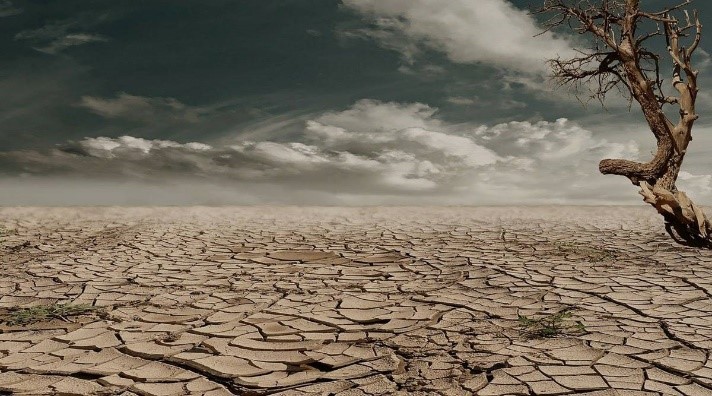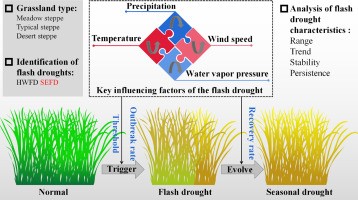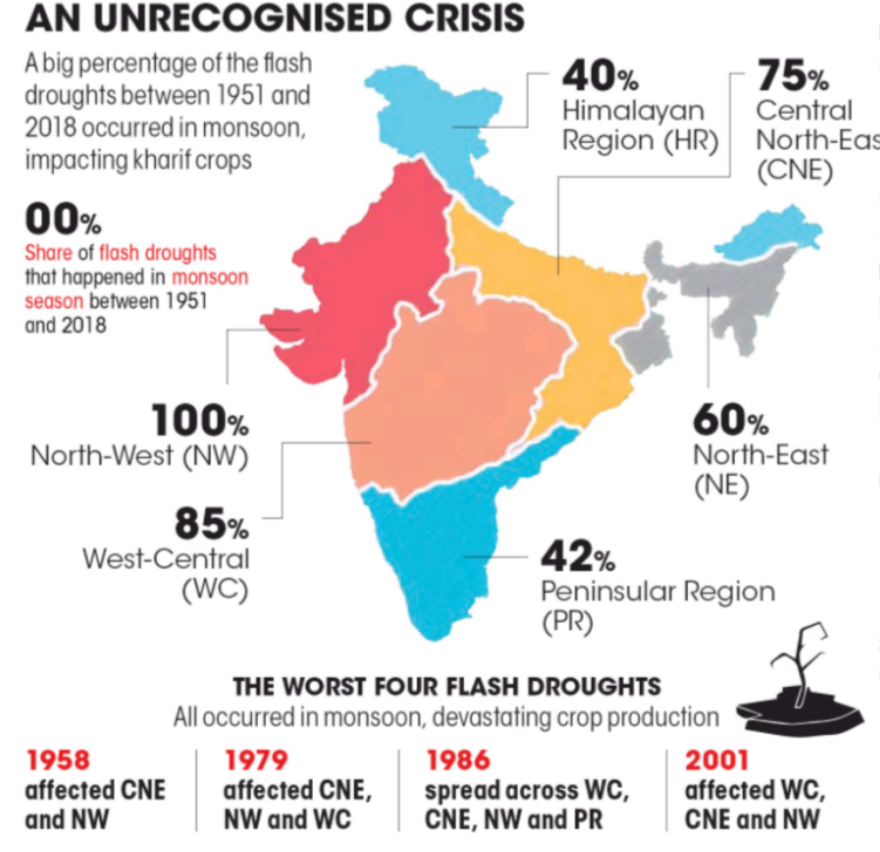Free Courses Sale ends Soon, Get It Now


Free Courses Sale ends Soon, Get It Now



Disclaimer: Copyright infringement not intended.
Context
Flash Drought
About
Characteristics

How is it different from Conventional Drought?
Drivers of Flash Drought
Impact
Flash Drought Stress Index, or, FDSI
Findings of the new study
Flash flood Hotspot
The case of India

Monsoon season Flash Drought
Impact
Challenges Related to Flash Drought Management
Way Forward
Closing Remark
|
PRACTICE QUESTION Q. How is a Flash Drought different from a Conventional Drought? What are the drivers of Flash Drought and what are the challenges related to Flash Drought Management? Suggest measures to tackle Flash Droughts. |
https://indianexpress.com/article/technology/science/flash-droughts-affect-india-7639227/
© 2024 iasgyan. All right reserved